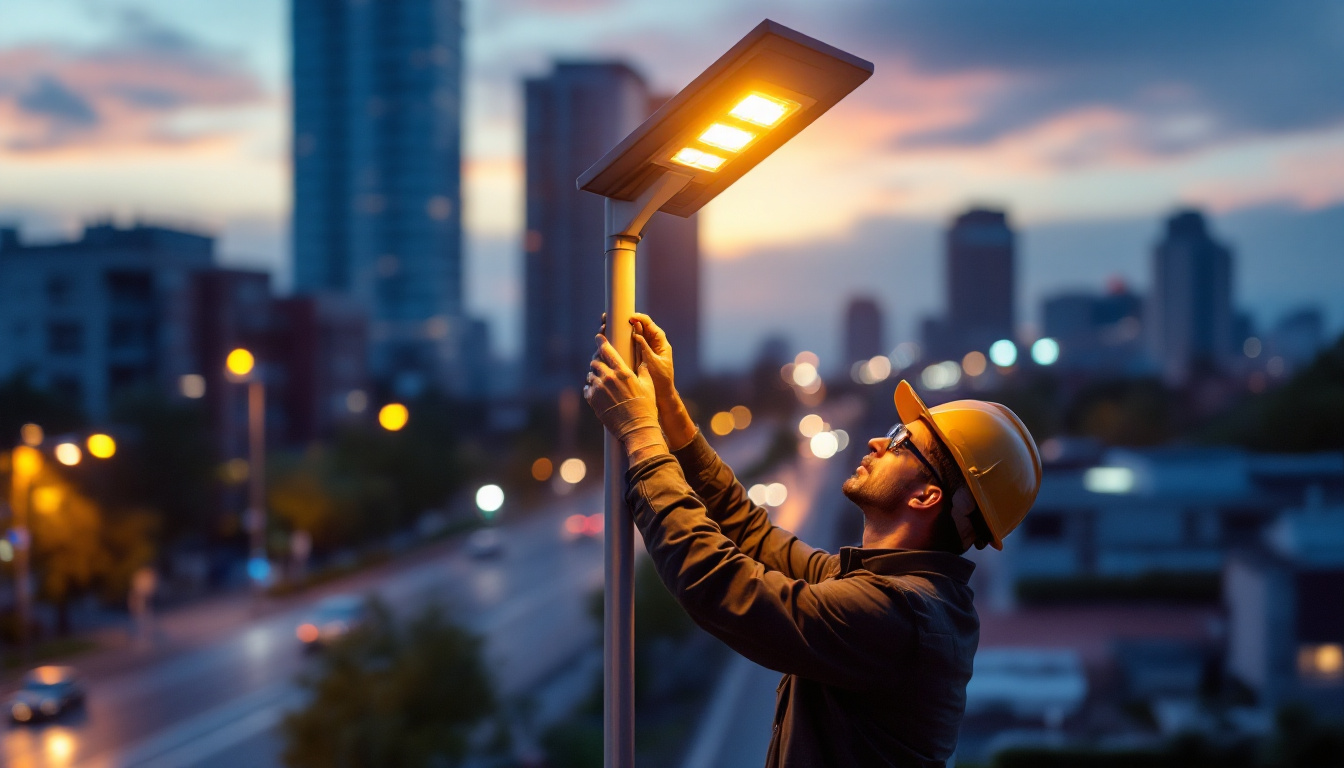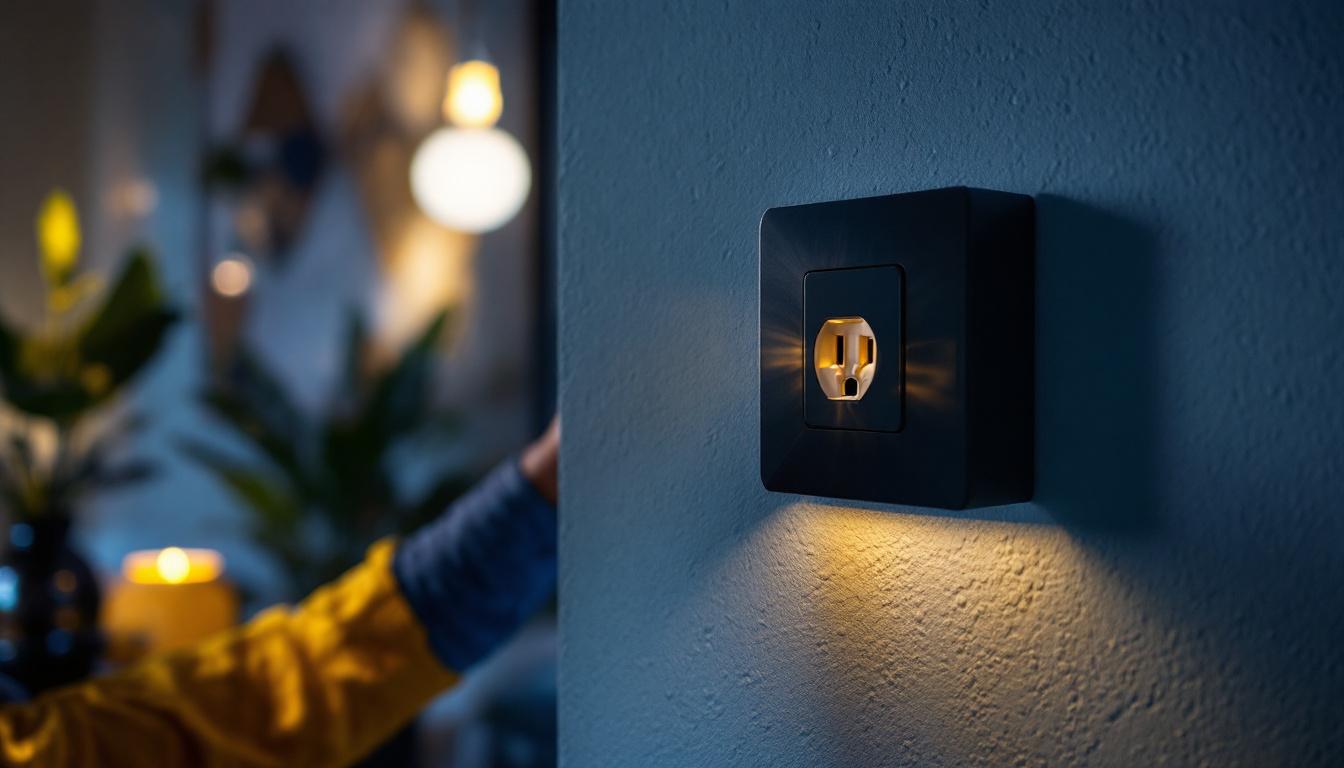
As the demand for sustainable and energy-efficient solutions continues to grow, commercial solar street lights have emerged as a popular choice for municipalities and businesses alike. However, the installation of these systems is not without its challenges. For lighting contractors, understanding the common pitfalls in the installation and maintenance of solar street lights can make a significant difference in project success and client satisfaction. This guide will explore the critical mistakes to avoid when working with commercial solar street lights.
Solar street lights operate using photovoltaic panels that convert sunlight into electricity. This energy is stored in batteries and used to power LED fixtures during the night. The technology has advanced significantly, making solar street lights more efficient and reliable than ever. Modern solar street lights often come equipped with smart technology, allowing for features such as motion sensors and adaptive lighting, which can adjust brightness based on pedestrian activity. This not only enhances safety but also conserves energy, extending the life of the battery and reducing operational costs.
However, not all solar street lights are created equal. Factors such as the quality of components, the design of the system, and the local climate can all impact performance. Contractors must familiarize themselves with the technology to make informed decisions when selecting products for their projects. For instance, in areas with prolonged cloudy weather, it may be beneficial to choose solar lights with larger battery capacities or additional backup power options to ensure consistent illumination. Understanding the nuances of solar technology can lead to better project outcomes and increased satisfaction for end-users.
One of the most significant misconceptions surrounding solar street lights is that they are a one-size-fits-all solution. Many contractors may assume that a single model will suffice for various applications, but this is rarely the case. Different environments and requirements necessitate tailored solutions. For example, urban areas with high levels of ambient light may require more powerful fixtures to ensure visibility, while rural settings might benefit from lower-intensity lights that blend seamlessly into the landscape. Recognizing these differences is crucial for effective implementation.
Additionally, some contractors underestimate the importance of solar panel orientation and positioning. Proper alignment can dramatically affect the efficiency of energy collection, which is crucial for the system’s overall performance. It is also essential to consider seasonal variations in sunlight exposure; for instance, panels may need to be adjusted or designed to capture the maximum amount of sunlight during winter months when days are shorter. This level of detail can significantly enhance the reliability and longevity of solar street lighting systems, ensuring they meet the needs of the communities they serve.
A comprehensive site assessment is crucial before installing solar street lights. Factors such as shading from trees or buildings, the geographic location, and the existing infrastructure must be carefully evaluated. Failing to conduct a thorough assessment can lead to inadequate lighting and increased operational costs. The assessment should also take into account the solar potential of the site, which involves analyzing sun exposure throughout the year. This data can be gathered using tools like solar pathfinders or software simulations that predict solar gain, ensuring that the solar panels will receive optimal sunlight for efficient energy generation.
Contractors should also consider the intended use of the area being lit. For instance, a busy intersection may require more powerful lights and a different layout compared to a quiet park. Understanding these nuances can help in selecting the appropriate solar street light model. Furthermore, factors such as pedestrian traffic patterns, vehicular movement, and the presence of nearby amenities like bus stops or recreational areas should be factored into the planning. This holistic approach ensures that the lighting not only enhances safety but also improves the overall aesthetic and functionality of the space.
Engaging with stakeholders, including local authorities and community members, during the planning phase can provide valuable insights. Their feedback can help identify specific needs and preferences, ensuring that the final installation meets community expectations. For example, residents may have preferences regarding the brightness levels or the design of the fixtures, which can influence the overall acceptance of the project. Additionally, local authorities might have regulations or guidelines that must be adhered to, which can streamline the planning process when addressed early on.
Additionally, involving stakeholders can facilitate smoother project approval processes and foster a sense of ownership among community members, which can lead to better maintenance and care for the installed systems. Community workshops or informational meetings can serve as platforms for discussion, allowing residents to voice their concerns and suggestions. This collaborative approach not only builds trust but also empowers the community, making them more likely to engage in the upkeep of the solar street lights, thus ensuring their longevity and effectiveness in enhancing public safety and accessibility.
While budget constraints are a reality for many projects, opting for low-cost components can lead to long-term issues. Cheaper solar panels, batteries, and LED fixtures may save money upfront but can result in higher maintenance costs and shorter lifespans. Investing in quality components is essential for ensuring reliability and performance.
Contractors should prioritize products from reputable manufacturers that offer warranties and support. This not only guarantees a certain level of quality but also provides peace of mind for both the contractor and the client.
The battery is a critical component of any solar street light system. Selecting the right type of battery, whether lithium-ion or lead-acid, can significantly impact the system’s performance. Lithium-ion batteries, for instance, tend to have a longer lifespan and better efficiency compared to their lead-acid counterparts.
Moreover, proper battery management is essential. Contractors should ensure that the battery is adequately sized for the application and that the solar panel can fully recharge it during daylight hours. This prevents issues such as undercharging or overcharging, which can lead to premature battery failure.
Each solar street light system comes with specific installation guidelines from the manufacturer. Adhering to these guidelines is vital for ensuring optimal performance and longevity. Skipping steps or improvising during installation can lead to malfunctioning systems and warranty voids.
Contractors should take the time to read and understand the installation manual thoroughly. This includes understanding the electrical connections, mounting techniques, and any required safety measures.
Mounting solar street lights correctly is crucial for their performance. The height and angle of the lights can affect their ability to illuminate the area effectively. Generally, lights should be mounted high enough to avoid vandalism while ensuring adequate coverage of the intended area.
Additionally, the mounting structure should be sturdy enough to withstand environmental factors such as wind and rain. Using high-quality mounting hardware and following best practices for installation can prevent future issues.
Regular maintenance is essential for the longevity of solar street lights. Contractors should establish a maintenance schedule that includes cleaning solar panels, checking battery health, and inspecting LED fixtures for any signs of wear or damage.
Cleaning the solar panels is particularly important, as dirt and debris can significantly reduce their efficiency. Depending on the local environment, this may need to be done more frequently in areas with heavy dust or pollen.
Implementing a monitoring system can help track the performance of solar street lights over time. This can include checking battery levels, energy production, and light output. Monitoring can help identify issues early, allowing for timely interventions and repairs.
Some modern solar street lights come equipped with smart technology that allows for remote monitoring, providing contractors with valuable data to optimize performance and maintenance schedules.
Educating clients and stakeholders about the operation and maintenance of solar street lights is crucial for ensuring their success. Providing training sessions can empower community members to take an active role in the upkeep of the systems.
Additionally, offering resources such as user manuals and maintenance checklists can help clients understand their responsibilities and the importance of regular care. This proactive approach can lead to fewer issues and a more satisfied client base.
It is essential to set realistic expectations regarding the performance of solar street lights. Factors such as weather conditions, geographic location, and usage patterns can all influence how well the lights perform. Contractors should communicate these variables to clients to avoid misunderstandings.
By managing expectations, contractors can foster a positive relationship with clients, leading to repeat business and referrals.
Commercial solar street lights offer a sustainable and cost-effective lighting solution for various applications. However, the successful installation and maintenance of these systems require careful planning, quality components, and ongoing education. By avoiding common mistakes and adhering to best practices, lighting contractors can ensure the longevity and effectiveness of solar street lights, ultimately leading to satisfied clients and thriving communities.
In an era where sustainability is paramount, embracing solar technology not only enhances the quality of life in communities but also positions contractors as leaders in the field of energy-efficient solutions. By following the guidelines outlined in this article, lighting contractors can navigate the complexities of commercial solar street lights with confidence and expertise.
Ready to elevate your lighting projects with the best in commercial solar street lights? At LumenWholesale, we provide lighting contractors like you with spec-grade, high-quality lighting products at unbeatable wholesale prices. Say goodbye to local distributor markups and hello to our premium selection that meets the highest industry standards. With free shipping on bulk orders, you can trust that you’re getting the best value without any hidden fees. Make your next project shine with reliability and cost-efficiency. Wholesale Lighting at the Best Value is just a click away—experience the LumenWholesale difference today.

Discover innovative hacks and expert tips for smart lighting contractors in this comprehensive guide.

Discover the essentials of solar house lights with our comprehensive guide tailored for lighting contractors.

Explore the pros and cons of converting LED lights to can light bulbs and discover alternative solutions.

Discover why light switch timers are essential tools for lighting contractors.